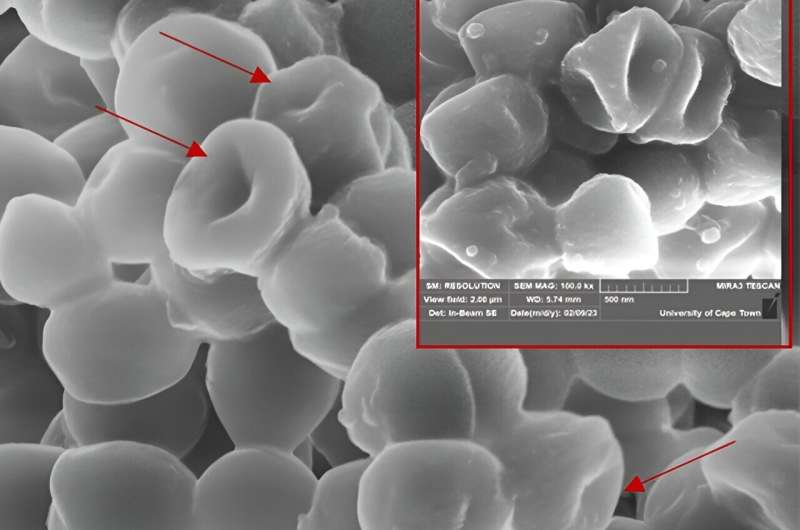This article has been reviewed according to Science X's editorial process and policies. Editors have highlighted the following attributes while ensuring the content's credibility:
fact-checked
proofread
Novel lipopeptide proves lethal against Staphylococcus aureus

A novel antibacterial lipopeptide produced by the bacterium Serratia marcescens has been shown to be highly effective in killing Staphylococcus aureus—one of the most important pathogens occurring in humans.
Staphylococcus aureus is one of the five most common causes of hospital-acquired infections and is often the cause of life-threatening infections following surgery. Since the introduction of antibiotics in the early 1940s, S. aureus has by now developed resistance against most classes of antibiotics, including penicillin.
However, over the last six decades, only two new classes of antibiotics with unique modes of action have been introduced onto the market. One of these, daptomycin, also belongs to the lipopeptide class of antibiotics.
In a paper published in Microbiology Spectrum recently, Dr. Tanya Decker (neé Clements) from Stellenbosch University (SU) provided the first insight into the mode of action of the lipopeptide serrawettin W2-FL10, derived from Serratia marcescens. She demonstrated that this lipopeptide targets the cell membrane of S. aureus, causing lesions which result in the leakage of intracellular components and ultimately cell death.
She also demonstrated that serrawettin W2-FL10 is not toxic to mammalian cells, thereby making it a promising therapeutic agent for the treatment of bacterial infections in humans.
Furthermore, as this lipopeptide's structure is much smaller than that of daptomycin (five amino acids and a C10 fatty acid chain compared to 13 amino acids and a C10 fatty acid chain), the manufacturing costs of serrawettin W2-FL10 would be significantly less.
Why are some lipopeptides antimicrobial?
Dr. Decker, who is currently a postdoctoral researcher at the Helmholtz Institute for Pharmaceutical Research Saarland in Germany, started working on serrawettin W2-FL10 back in 2017 in the research group of Prof. Wesaal Khan in SU's Department of Microbiology.
Her research followed the work done by another postgraduate student in this group, Dr. Thando Ndlovu, who isolated various bacterial strains from wastewater samples whose biosurfactants proved effective against antibiotic-resistant and disease-causing bacteria. In polluted environments, biosurfactants are produced naturally by bacteria to protect them against and outcompete other bacteria.
Decker's research then focused on understanding the antimicrobial activity of Serratia-derived lipopeptides. She focused primarily on pigmented and non-pigmented S. marcescens strains and demonstrated that these strains also produced a wide range of broad-spectrum antimicrobial compounds. From these findings, the lipopeptide serrawettin W2-FL10 was found to be a promising candidate for further investigation into its antimicrobial characteristics.
Prof. Khan says the success of their findings thus far is also largely based on close collaboration with Prof. Marina Rautenbach, a biochemist and specialist in antimicrobial peptides, at SU's Department of Biochemistry.
At the Helmholtz Institute in Germany, Decker is continuing her research into novel natural antimicrobial products.
More information: Antibacterial efficacy and membrane mechanism of action of the Serratia-derived non-ionic lipopeptide, serrawettin W2-FL10, Microbiology Spectrum (2024). DOI: 10.1128/spectrum.02952-23
Provided by Stellenbosch University





















